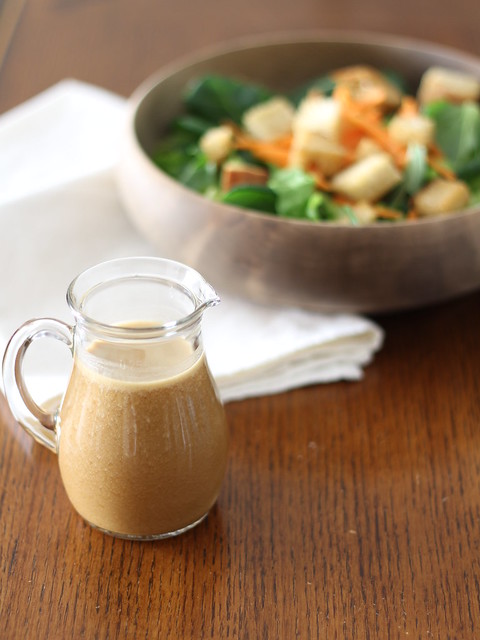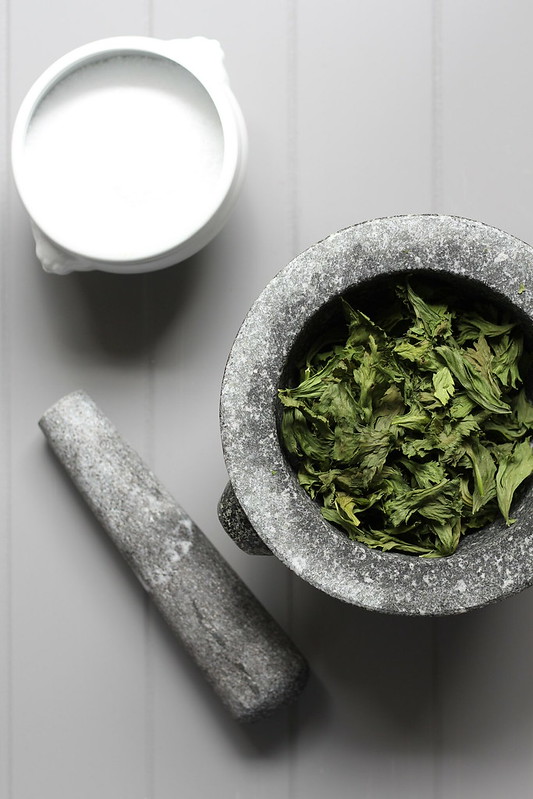I suppose it only makes sense to follow a cookie recipe with a salad recipe. Or rather a salad dressing recipe. You guys have already seen a couple of recipes on this blog from America’s Test Kitchen’s “The Complete Vegetarian Cookbook.” It has quickly become one of my absolute favorite cookbooks as well as my chief partner in meal planning.
Each week, we get a box of local produce delivered by our CSA. (All winter long! Pinch me!) After sorting through the offerings, I usually flip to the index of this cookbook and decide what meals I want to make for the week. I almost always receive some sort of heirloom lettuce, which gets to be tiresome week after week. So I’ve been working my way through various salad dressing recipes. This miso-sesame dressing has emerged as a favorite so far. It’s savory and salty and garlicky and gingery, and I had to hold myself back from eating it by the spoonful because that’s embarrassing, right?
Given the flavor profile, this dressing goes well with Asian-inspired salad ingredients. I tossed it with a mixture of butter lettuce and tatsoi, carrots, edamame, green onions, and some homemade sesame-crusted croutons. And then I ate it pretty much every day for a week. So good.
••••••••••••••••••••••••••••••••••••••••••••••••••••••••••••••••••••••••
Miso-Sesame Dressing
- 6 Tbs. water
- 1/4 cup rice vinegar
- 7 tsp. red miso paste*
- 1 Tbs. soy sauce
- 1 1/2 tsp. honey
- 2 Tbs. grated fresh ginger
- 1 garlic clove, minced
- 2 Tbs. neutral-tasting oil (I used sunflower seed oil)
- 1 Tbs. toasted sesame oil
Place water, vinegar, miso, soy sauce, honey, ginger, and garlic in a blender and blend until the mixture is well combined, about 15 seconds. Add oils and blend until the oils are incorporated and the dressing is smooth, about 15 seconds.
Makes about 1 cup.
Dressing can be made ahead and refrigerated for up to 1 week.
Source: Slightly adapted from America’s Test Kitchen “The Complete Vegetarian Cookbook.”
* I couldn’t find miso paste at my regular grocery store, so I ordered it online. There are several different types of miso paste so make sure you get the red one; it has a much deeper flavor. Don’t worry if it comes in a large container; the stuff lasts forever in the fridge. Plus, you can always make miso brown rice cakes!











